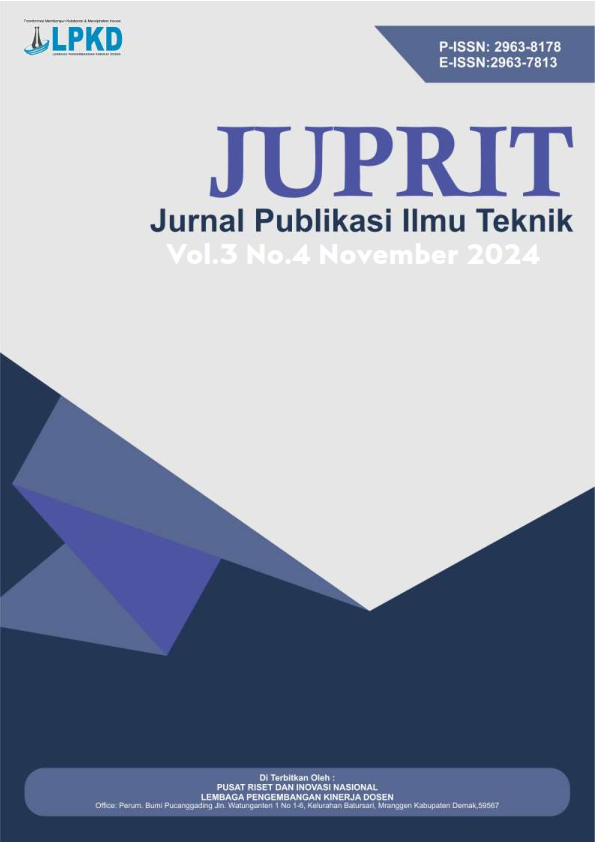Audit Tata Kelola Pelayanan E-Ktp Pada Dinas Kependudukan Dan Pencatatan Sipil Menggunakan Framework Cobit 5 Domain DSS
DOI:
https://doi.org/10.55606/juprit.v3i4.4384Keywords:
Audit, Cobit 5 GovernanceAbstract
The provision of population administration services, such as the issuance of electronic Resident Identity Cards (e-KTP), is very important to ensure the continuity of public services in all regions. The use of information technology in population administration procedures has spread throughout the world as a means of increasing bureaucratic efficiency and service quality. The fact that there are organizations that use IT resources to support business operations and procedures in daily activities is proof of this (Salsabila and Hadi, 2014). The e-KTP program was introduced by the Indonesian government to improve the accuracy of demographic data and speed up the service delivery process. However, problems with availability, security and data integrity in the e-KTP system also occur when the technology is implemented. System audits are critical to maintaining service quality and security. The organization in charge of population administration services, such as the distribution of e-KTP, is the Population and Civil Registration Service (DISDUKCAPIL). E-KTP is intended to increase the accuracy of population data and make the population identification process more effective and secure. However, the successful implementation of e-KTP is highly dependent on good information technology governance. Tools for performance evaluation determine whether the information system can achieve its business goals. The Department of Population and Civil Registration has achieved Capability level at level 3 (Estabilished Process) based on an evaluation of the information technology governance system that uses the COBIT 5 DSS (Deliver, Service, Support) domain. This shows that an organization has implemented the entire process. COBIT 5 DSS (Deliver, Service, Support). This shows that an organization has implemented the entire process. COBIT 5 has provided assistance in the form of guidelines for harmonization between the business objectives of the Department's e-KTP creation services in order to increase the level of IT process capabilities. Population and civil registration, as well as the goals of the six Indonesian countries proclaimed by the Minister of Home IT to increase the effectiveness and efficiency of services, enable E-KTP to achieve its organizational goal.
Downloads
References
Adikara, F., & Pambudi, A. (2013). Analisis kebutuhan stakeholder dalam rangka mengembangkan model tata kelola teknologi informasi dengan kerangka kerja COBIT 5 pada perguruan tinggi. Prosiding KNTI.
Cahyani, U., Aknuranda, I., & Perdanakusuma, A. R. (2018). Evaluasi layanan BPJSTK Mobile dengan menggunakan domain deliver, service and support berdasarkan framework COBIT 5 (Studi kasus: BPJS Ketenagakerjaan Cabang Mataram). Jurnal Pengembangan Teknologi Informasi dan Ilmu Komputer, 2(8), 2382–2391.
Gondodiyoto, S. (2003). Audit sistem informasi pendekatan konsep. Media Global Edukasi.
Isa, I. (2012). Evaluasi pengontrolan sistem informasi. Graha Ilmu.
ISACA. (2012). COBIT 5 Enabling Processes. ISACA.
Islamiah, M. P. (2014). Tata kelola teknologi informasi (IT Governance) menggunakan framework COBIT 5 (Studi kasus: Dewan Kehormatan Penyelenggara Pemilu (DKPP)). Universitas Islam Negeri Syarif Hidayatullah Jakarta.
Kertahadi. (2007). Analisis dan perancangan sistem informasi. Penerbit ANDI.
Mulyadi. (2002). Auditing Buku 1 Edisi 6. Penerbit Salemba Empat.
Nurjanah, L. (2015). Analisis tingkat kematangan sistem informasi pada RS Panti Wilasa Dr.Cipto Semarang menggunakan framework COBIT 5. Universitas Dian Nuswantoro.
Putri, Y. D., Heningtyas, Y., & Junaidi, A. (2019). Audit manajemen teknologi informasi pada PT XYZ menggunakan framework COBIT 5. Jurnal Komputasi, 7(1), 19.
Salsabila, A., & Hadi, H. P. (2014). Analisis tingkat kematangan sistem informasi pada Rumah Sakit Aisyiyah Kudus. Jurnal Udinus, 1–12.
Sarno, R. (2009). Audit sistem & teknologi informasi. ITS Press.
Shavera, D. T., Kurniawan, D., & Heningtyas, Y. (2021). Audit layanan teknologi informasi Rumah Sakit XYZ menggunakan framework COBIT 5.0 (Control Objective for Information and Related Technology).
Suryono, R. R., Darwis, D., & Gunawan, S. I. (2018). Information governance audit using framework COBIT 5: Audit tata kelola teknologi informasi menggunakan framework COBIT 5 (Studi kasus: Balai Besar Perikanan Budidaya Laut Lampung). Jurnal TEKNOINFO, 12(1).
Sutabri, T. (2012). Analisis sistem informasi. Penerbit ANDI.
Syuhada, A. M. (2021). Kajian perbandingan COBIT 5 dengan COBIT 2019 sebagai framework audit tata kelola teknologi informasi. Jurnal Ilmiah Indonesia, 6(1), 1–13.
Downloads
Published
How to Cite
Issue
Section
License
Copyright (c) 2024 Jurnal Penelitian Rumpun Ilmu Teknik

This work is licensed under a Creative Commons Attribution-ShareAlike 4.0 International License.








